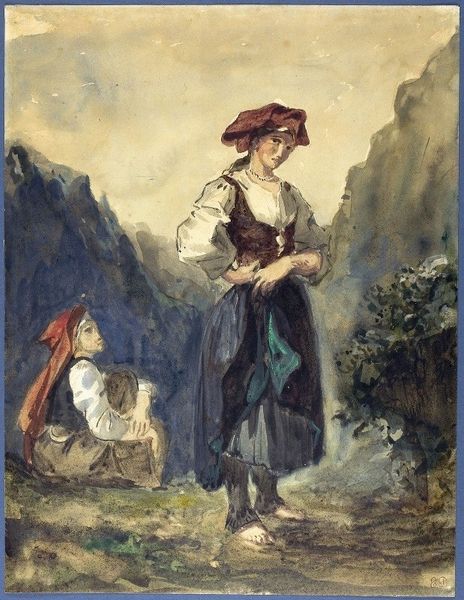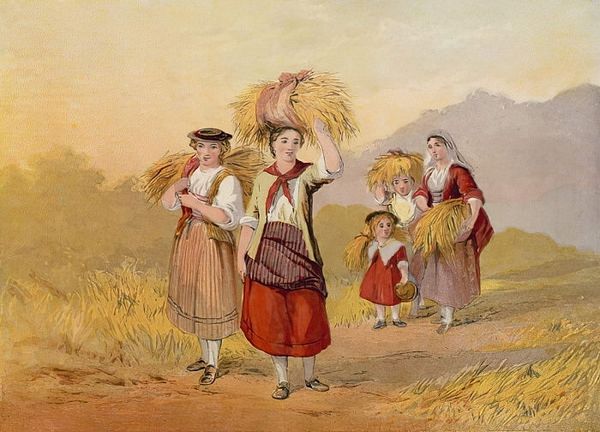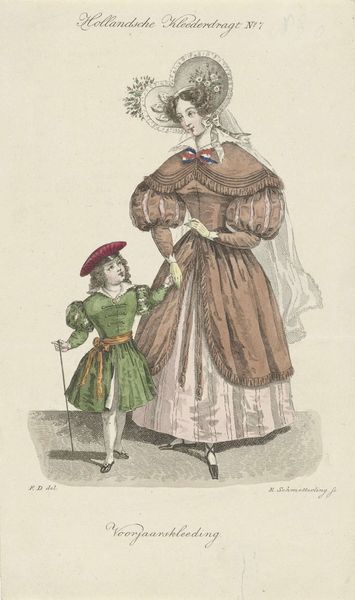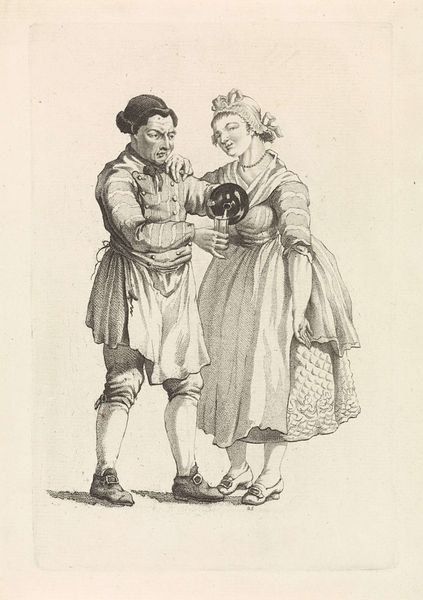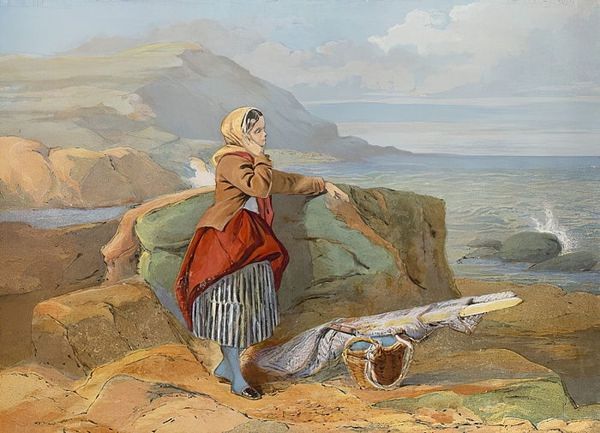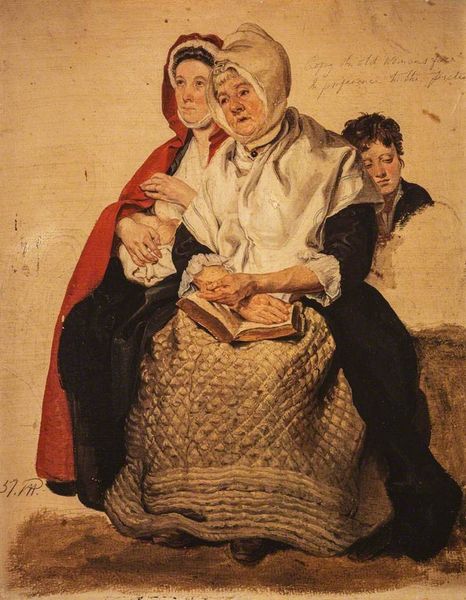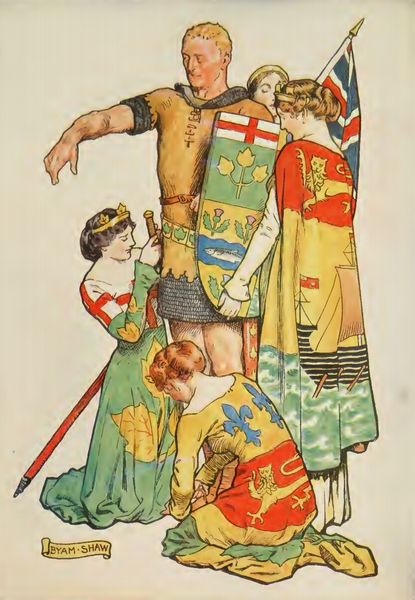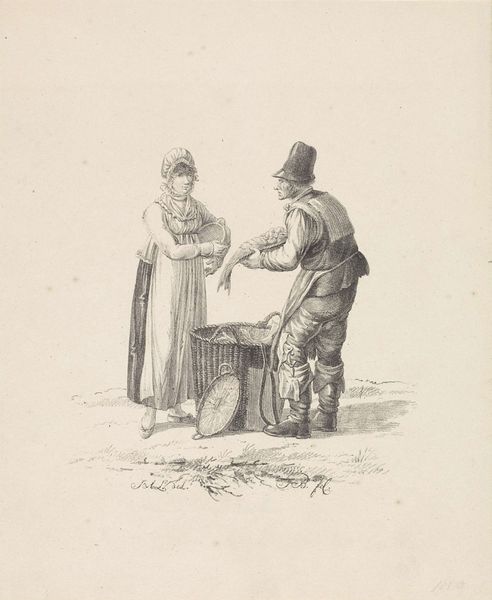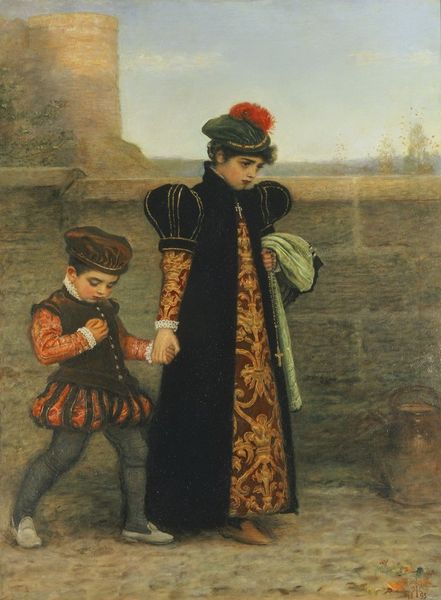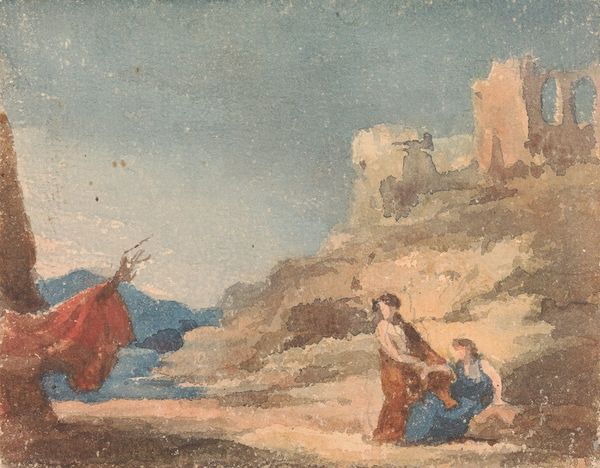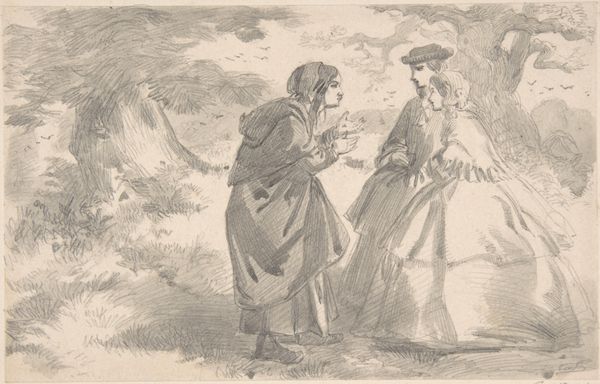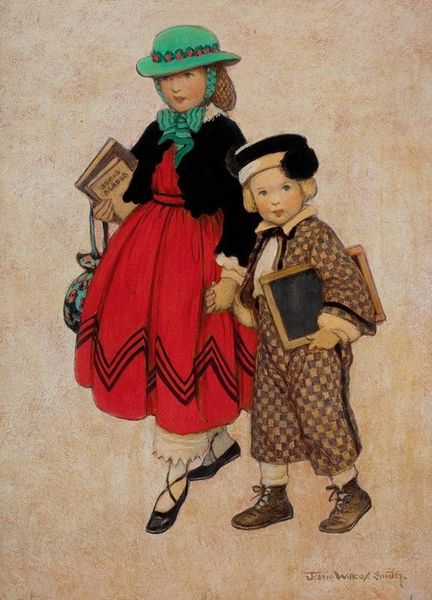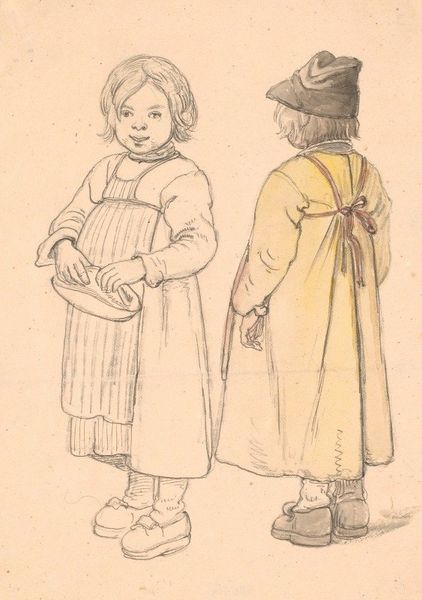
painting, watercolor
#
portrait
#
painting
#
figuration
#
oil painting
#
watercolor
#
portrait reference
#
romanticism
#
genre-painting
#
portrait art
#
fine art portrait
Copyright: Public domain
Miklos Barabas made this watercolor painting, Women at Nettuno, in 1805. Watercolor painting has a long history, dating back to prehistoric cave paintings. It remains a popular choice for artists who value its portability, ease of use, and delicate effects. Barabas has taken advantage of watercolor’s inherent qualities of transparency and luminosity to depict the rich, saturated color of the women’s dresses, and to capture the atmospheric perspective of the distant landscape. What’s important to remember, however, is that even a seemingly straightforward watercolor like this one involves labor, and also a kind of cultural work. Barabas has depicted these women wearing what he identifies as traditional dress. How accurate is this? And what purpose did it serve for him to record it? In the history of art, close observation of material culture is often associated with an exercise of power. By considering these questions, we can better understand the complex interplay between materials, making, and cultural context, challenging the traditional distinctions between fine art and craft.
Comments
No comments
Be the first to comment and join the conversation on the ultimate creative platform.
